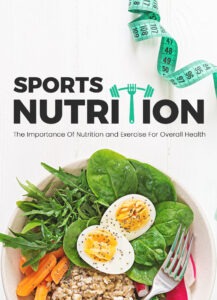Keto-Friendly Foods You Should Add to Your Diet

Looking for more amazing products? Check out our online store and explore our collection here! Happy shopping!
Before diving in, please note: This post is for informational purposes only. If you’d like to know more about how we approach topics, feel free to check out our friendly Disclaimer Page.
Hey there, amazing readers! 
We’re committed to delivering quality posts, and your support (even just sticking around despite the ads) means everything to us. So, bear with us, and thanks for helping us keep the good vibes rolling. Now, on to the fun stuff!
TRANSLATE BUTTON AT THE END OF THE ARTICLE
The ketogenic diet, or keto diet, is a low-carbohydrate, high-fat eating plan that has gained popularity for its potential benefits in weight loss, improved mental clarity, and better overall health.
The diet encourages the body to enter a state of ketosis, where it burns fat for energy instead of carbohydrates.
To achieve and maintain ketosis, it is essential to focus on foods that are low in carbohydrates but high in healthy fats and moderate in protein.
Here is a guide to some of the best keto-friendly foods you should consider adding to your diet.
Healthy Fats and Oils
Fats are the cornerstone of the keto diet, providing the primary source of energy.
It is important to choose healthy fats and oils to support overall health.
Examples
Avocados: Rich in healthy monounsaturated fats, fiber, and potassium, avocados are an excellent addition to the keto diet.
You can enjoy them sliced in salads, mashed as guacamole, or even on their own with a pinch of salt.
Olive Oil: Extra virgin olive oil is packed with antioxidants and heart-healthy fats.
It is perfect for drizzling over salads, vegetables, and keto-friendly dishes.
Coconut Oil: High in medium-chain triglycerides (MCTs), coconut oil is easily converted into energy by the liver and helps promote ketosis.
It can be used for cooking, baking, or adding to smoothies and coffee.
Butter and Ghee: These dairy fats are rich in butyrate, a fatty acid that supports gut health.
Use butter or ghee for cooking, sautéing, and adding flavor to dishes.
Low-Carb Vegetables
While many vegetables are high in carbohydrates, there are plenty of low-carb options that are perfect for the keto diet.
These vegetables are rich in fiber, vitamins, and minerals while being low in net carbs.
Examples
Leafy Greens: Spinach, kale, Swiss chard, and arugula are low in carbs and high in nutrients like vitamins A, C, and K.
They can be used in salads, smoothies, or as a base for various keto dishes.
Cruciferous Vegetables: Vegetables like broccoli, cauliflower, cabbage, and Brussels sprouts are low in carbs and high in fiber.
They can be steamed, roasted, or used as a substitute for rice and mashed potatoes.
Zucchini: This versatile vegetable can be spiralized into noodles (zoodles), used in casseroles, or baked into chips.
It is low in carbs and has a mild flavor that complements many dishes.
Bell Peppers: Although slightly higher in carbs than other keto vegetables, bell peppers are still a great addition due to their high vitamin C content and versatility in cooking.
Quality Proteins
While protein should be consumed in moderation on the keto diet, it is still an essential part of the plan.
The focus should be on high-quality, nutrient-dense protein sources.
Examples
Eggs: Eggs are an excellent source of high-quality protein, healthy fats, and various vitamins and minerals.
They are versatile and can be prepared in countless ways, from scrambled and poached to boiled and baked.
Fatty Fish: Fish like salmon, mackerel, sardines, and trout are high in omega-3 fatty acids, which are beneficial for heart health and inflammation.
They are also an excellent source of protein and can be grilled, baked, or pan-seared.
Poultry: Chicken thighs and drumsticks with the skin on are great choices for keto due to their higher fat content.
Discover "SUPERFOODS: The Key to Health and Balance
"
Turkey and duck are also good options.
Grass-Fed Beef and Pork: These meats are higher in omega-3 fatty acids and other beneficial nutrients compared to conventionally raised meats.
Opt for cuts like ribeye, sirloin, and pork belly for their higher fat content.
Nuts and Seeds
Nuts and seeds are great for snacking on the keto diet, as they provide healthy fats, protein, and fiber.
However, it is essential to choose low-carb varieties and consume them in moderation.
Examples
Almonds: Almonds are low in carbs and high in healthy fats, fiber, and vitamin E.
They make a great snack on their own or can be used to make almond flour for keto baking.
Walnuts: High in omega-3 fatty acids and antioxidants, walnuts are a nutritious choice for the keto diet.
They can be eaten on their own, added to salads, or used in keto desserts.
Chia Seeds: Chia seeds are rich in fiber, omega-3 fatty acids, and protein.
They can be used to make chia pudding, added to smoothies, or sprinkled on top of yogurt and salads.
Pumpkin Seeds: Also known as pepitas, pumpkin seeds are low in carbs and high in magnesium, zinc, and healthy fats.
They make a great topping for salads and soups or can be eaten as a snack.
Dairy Products
Full-fat dairy products are a good source of fat and protein on the keto diet.
However, it is essential to choose products that are low in carbohydrates and avoid those with added sugars.
Examples
Cheese: Hard and soft cheeses like cheddar, mozzarella, brie, and goat cheese are low in carbs and high in fat and protein.
They can be enjoyed as snacks, added to salads, or used in cooking.
Greek Yogurt: Full-fat Greek yogurt is lower in carbs than regular yogurt and provides a good source of protein.
It can be enjoyed on its own, mixed with berries, or used as a base for keto-friendly sauces and dressings.
Heavy Cream: Heavy cream is high in fat and low in carbs, making it perfect for adding to coffee, sauces, and desserts.
Cream Cheese: Cream cheese is versatile and can be used in both savory and sweet keto recipes, such as dips, spreads, and cheesecakes.
Berries
Most fruits are high in carbohydrates and not suitable for the keto diet.
However, some berries are relatively low in carbs and can be enjoyed in moderation.
Examples
Strawberries: Strawberries are low in carbs and high in vitamin C and antioxidants.
They can be enjoyed fresh, frozen, or blended into smoothies.
Raspberries: Raspberries are one of the lowest-carb fruits and are rich in fiber and antioxidants.
They are perfect for adding to yogurt, desserts, and salads.
Blackberries: Blackberries are another low-carb fruit option that provides vitamins, minerals, and fiber.
They can be eaten on their own or used in various keto recipes.
Blueberries: Blueberries are slightly higher in carbs than other berries, so they should be consumed in moderation.
They are rich in antioxidants and can be enjoyed as a topping for yogurt or in small quantities as a snack.
Low-Carb Sweeteners
While traditional sugar is not allowed on the keto diet, several low-carb sweeteners can be used to satisfy your sweet tooth without disrupting ketosis.
Examples
Stevia: A natural sweetener derived from the leaves of the Stevia plant, stevia has no carbs or calories and does not affect blood sugar levels.
Erythritol: A sugar alcohol that tastes and feels like sugar but contains almost no calories and does not spike blood sugar levels.
It is commonly used in keto baking and desserts.
Discover "Sports Nutrition: The Importance of Nutrition and Exercise for Overall Health
"

Monk Fruit Sweetener: Made from monk fruit extract, this sweetener has zero calories and does not affect blood sugar levels.
It is often blended with other sweeteners like erythritol to improve texture and taste.
Allulose: A rare sugar found in small quantities in some fruits, allulose has minimal calories and does not impact blood sugar levels.
It is ideal for baking and making keto-friendly syrups and sauces.
Conclusion
Incorporating these keto-friendly foods into your diet can help you maintain ketosis while providing your body with the nutrients it needs for optimal health.
By focusing on healthy fats, low-carb vegetables, quality proteins, nuts, seeds, dairy products, berries, and low-carb sweeteners, you can enjoy a variety of delicious meals while staying on track with your keto goals.
Remember to monitor your carb intake and consult a healthcare professional or nutritionist if you have any concerns or questions about the keto diet.

The Enlightenment Journey is a remarkable collection of writings authored by a distinguished group of experts in the fields of spirituality, new age, and esoteric knowledge.
This anthology features a diverse assembly of well-experienced authors who bring their profound insights and credible perspectives to the forefront.
Each contributor possesses a wealth of knowledge and wisdom, making them authorities in their respective domains.
Together, they offer readers a transformative journey into the realms of spiritual growth, self-discovery, and esoteric enlightenment.
The Enlightenment Journey is a testament to the collective expertise of these luminaries, providing readers with a rich tapestry of ideas and information to illuminate their spiritual path.
Our Diverse Expertise
While our primary focus is on spirituality and esotericism, we are equally passionate about exploring a wide range of other topics and niches 

To ensure we provide the most accurate and valuable insights, we collaborate with trusted experts in their respective domains 
Our blog originally focused on spirituality and metaphysics, but we’ve since expanded to cover a wide range of niches. Don’t worry—we continue to publish a lot of articles on spirituality! Frequently visit our blog to explore our diverse content and stay tuned for more insightful reads.
Hey there, amazing reader! 
Check out our store here and take a peek at some of our featured products below! Thanks for being awesome!












